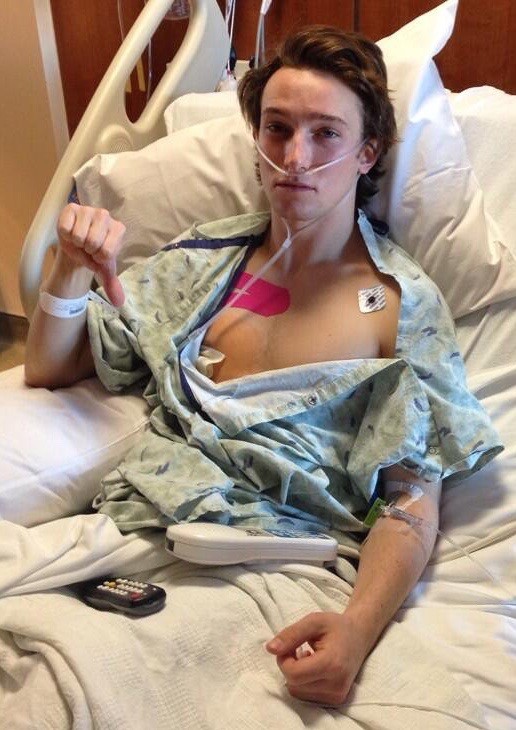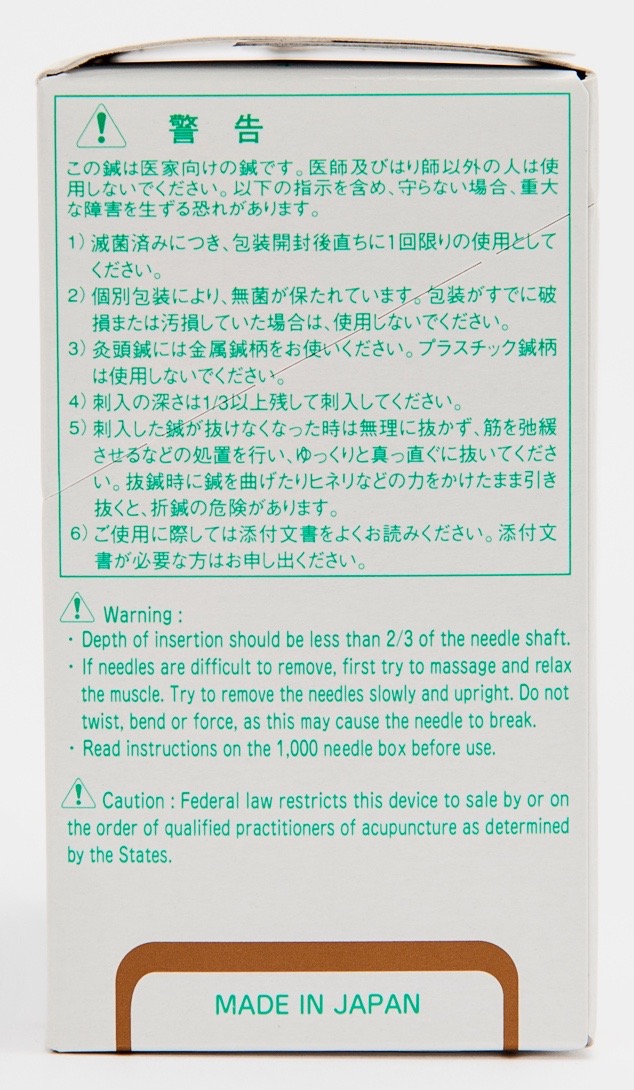“Dry needling is indistinguishable from acupuncture.”
— American Medical Association (AMA)
Here are the facts you really need to know about dry needling:
-
Dry needling is acupuncture.
More specifically, dry needling is acupuncture that involves inserting an acupuncture needle (a U.S. Food and Drug Administration [FDA]-regulated medical device) through the skin and into an acupuncture point (a circumscribed area of muscle or connective tissue) that is eliciting a flinch reaction on palpation, now commonly referred to as a trigger point, to cure, mitigate, treat, or prevent disease or other conditions—especially musculoskeletal and connective tissue disorders, including musculoskeletal pain. Dry needling is not new. It was first described more than 2,000 years ago in the Chinese medical literature.
-
Dry needling is unsafe when performed by physical therapists.
Dry needling is safe when performed by qualified practitioners of acupuncture, such as physicians and acupuncturists, but it is unsafe when performed by physical therapists—due to inadequate and improper training in acupuncture—as evidenced by the following examples:
- In Colorado, a physical therapist punctured freeskier Torin Yater-Wallace’s right lung with an acupuncture needle, causing damage to the lung that led to a pneumothorax (an accumulation of air between the lung and the chest wall, causing the lung to collapse). He required surgery to treat the pneumothorax and was hospitalized for five days.
Freeskier Torin Yater-Wallace gives a thumbs down in the St. Anthony Summit Medical Center in Frisco, Colorado, on November 29, 2013, during recovery from surgery to treat a pneumothorax that he suffered after a physical therapist punctured his right lung with an acupuncture needle.
- In Georgia, a physical therapist performed dry needling on a 15-year-old girl without obtaining the consent of her mother. She collapsed from the dry needling.
- In Maryland, a physical therapist punctured a nerve in high school teacher Emily Kuykendall’s left leg with an acupuncture needle, causing damage to the nerve that led to pain, numbness, and paresthesias (abnormal sensations of tingling [pins-and-needles]) (5). She required drugs to treat the pain.
“This [nerve injury] is really taking a physical and emotional toll on me,” Ms. Kuykendall wrote three weeks after the adverse event. “There is almost not a minute in the day that goes by that I wish that I had not gone to see [the physical therapist]”.
- In Arizona, three physical therapists performed dry needling through patients’ clothing, which resulted in “findings of substandard care”. This action placed the patients at risk for injuries (for example, to the heart or lungs) and infections (for example, with “flesh-eating” Streptococcus pyogenes or methicillin-resistant Staphylococcus aureus [MRSA]).
- In Arizona, a physical therapist disposed of used acupuncture needles in a public recycling container, which violated Arizona’s Biohazardous Medical Waste Regulations (Arizona Administrative Code [A.A.C.] R18-13-1401 et seq.) (9). This action placed the public and recycling workers at risk for needlestick injuries and infections (for example, with hepatitis B virus [HBV], hepatitis C virus [HCV], or human immunodeficiency virus [HIV]).
“Dry needling is unsafe when performed by physical therapists or chiropractors.”
CNA, a professional liability insurance company, provided the following examples:
- A physical therapist punctured a patient’s right lung with an acupuncture needle, causing damage to the lung that led to a pneumothorax. She was hospitalized and underwent treatment for the pneumothorax.
- A physical therapist punctured a patient’s left lung with an acupuncture needle, causing damage to the lung that led to a pneumothorax. She was hospitalized and underwent treatment for the pneumothorax.
- A physical therapist punctured a patient’s lung with an acupuncture needle, causing damage to the lung that led to a pneumothorax. She required surgery to treat the pneumothorax and was hospitalized for three days.
- A physical therapist was performing dry needling on a patient’s hip when the handle of the acupuncture needle broke off (probably due to the physical therapist using excessive force when manipulating [rotating or pistoning] the acupuncture needle), leaving the shaft of the acupuncture needle lodged in the hip. She was hospitalized and underwent surgery to remove the shaft of the acupuncture needle.
- A physical therapist performed dry needling on a patient’s calf while failing to adhere to basic infection prevention and control practices, resulting in the patient developing a calf infection. She required “intravenous therapy and two surgical procedures” to treat the calf infection.
Patient safety and quality of care are paramount. Therefore, the National Center for Acupuncture Safety and Integrity (NCASI) agrees with the American Medical Association (AMA) that dry needling should only be performed by qualified practitioners of acupuncture, such as physicians and acupuncturists .
-
The act of piercing and stimulating tissues with an acupuncture needle to cure, mitigate, treat, or prevent disease or other conditions constitutes the practice of acupuncture.
The word acupuncture was derived from Latin acus, meaning “needle,” and English puncture. Acupuncture, which originated in China, is a form of surgery that involves piercing and stimulating tissues with an acupuncture needle to cure, mitigate, treat, or prevent disease or other conditions.
The American Medical Association (AMA) states that “dry needling is indistinguishable from acupuncture”.
-
A trigger point is an acupuncture point.
More specifically, a trigger point is an acupuncture point that is eliciting a flinch reaction on palpation. The Yellow Emperor’s Inner Classic (黃帝內經), the foundational text of Chinese medicine, explains that “a reactive (painful) acupuncture point indicates a clinically relevant acupuncture point” (“以痛爲腧”).
In a landmark study published in the journal Pain in 1977, Dr. Ronald Melzack, a scientist who revolutionized the study and treatment of pain, and colleagues examined the correlation between trigger points and acupuncture points. The results of their analysis showed that “every trigger point [reported in the Western medical literature] has a corresponding acupuncture point”
Simply put, a trigger point is an acupuncture point.
-
Dry needling is acupuncture, not manual therapy.
Physical therapists contend that their right to practice dry needling arises by virtue of their right to practice manual therapy. The term “manual therapy” simply means a remedial treatment consisting of manipulating a part or the whole of the body by hand. It certainly does not include the practice of surgery (severing or penetrating tissues) in any form.
-
It is a violation of the Federal Food, Drug, and Cosmetic Act (FDCA) and U.S. Food and Drug Administration’s (FDA) regulations when a physical therapist purchases or possesses acupuncture needles.
Acupuncture needles are regulated as Class II (special controls) medical devices under 21 CFR § 880.5580 and must comply with all applicable requirements of the FDCA and FDA’s regulations.
In order to ensure the safe and effective use of acupuncture needles, the FDCA and FDA’s regulations require that the “sale [of acupuncture needles] must be clearly restricted to qualified practitioners of acupuncture as determined by the States.” See 61 Fed.Reg. 64616 (Dec. 6, 1996) (emphasis added); see also 21 U.S.C. § 360j(e)(1); 21 CFR §§ 801.109, 807.3(i), 880.5580(b).
Accordingly, the FDCA and FDA’s regulations require that the label on a box of acupuncture needles bares the prescription statement “Caution: Federal law restricts this device to sale by or on the order of qualified practitioners of acupuncture as determined by the States.” See, for example, the label on a box of Seirin-brand acupuncture needles (emphasis added); see also 21 U.S.C. § 360j(e); 21 CFR §§ 801.109(b)(1), 807.3(i), 880.5580(b).
The label on a box of Seirin-brand acupuncture needles bares the prescription statement “Caution: Federal law restricts this device to sale by or on the order of qualified practitioners of acupuncture as determined by the States.”
-
Physical therapists tell patients that they do not use acupuncture needles to perform dry needling when, in fact, they do.
Patients have a legal right to truthful and accurate information.
-
Physical therapists are not qualified to use acupuncture needles.
Information required for the safe and effective use of acupuncture needles—including indications, effects, routes, methods, and frequency and duration of administration and relevant hazards, contraindications, side effects, and precautions—is not commonly known to physical therapists.
-
There are risks associated with dry needling when performed by physical therapists, including, but not limited to, the following:
- Risk of injuries (for example, to blood vessels, nerves, bones, the spinal cord, or organs).
- Risk of infections (for example, with hepatitis B virus [HBV], hepatitis C virus [HCV], human immunodeficiency virus [HIV], “flesh-eating” Streptococcus pyogenes, or methicillin-resistant Staphylococcus aureus [MRSA]).
-
It is a violation of the Occupational Safety and Health Administration’s (OSHA) Bloodborne Pathogens standard when a physical therapist washes his or her gloved hands with an alcohol-based hand rub.
The Centers for Disease Control and Prevention (CDC) warns that this action “can lead to the formation of glove micropunctures and subsequent hand contamination” with blood or other potentially infectious materials (4); therefore, this action places the patient and physical therapist at risk for infections (for example, with HBV, HCV, HIV, “flesh-eating” Streptococcus pyogenes, or MRSA). See 29 CFR § 1910.1030(d)(ix)(B); see also 29 U.S.C. § 654.
-
It is a violation of OSHA’s Bloodborne Pathogens standard when a physical therapist fails to wash his or her hands immediately after removal of gloves.
CDC warns that this action can result in transmission of pathogenic microorganisms from the patient to the physical therapist and from the physical therapist to the patient (4); therefore, this action places the patient and physical therapist at risk for infections (for example, with “flesh-eating” Streptococcus pyogenes or MRSA). See 29 CFR § 1910.1030(d)(2)(v); see also 29 U.S.C. § 654.
-
It is a violation of OSHA’s Bloodborne Pathogens standard when a physical therapist inserts a used acupuncture needle into an acupuncture-needle guide tube.
This action places the physical therapist at risk for needlestick injuries and infections (for example, with HBV, HCV, or HIV). See 29 CFR § 1910.1030(d)(2)(vii); see also 29 U.S.C. § 654.
-
It is a violation of the FDCA and FDA’s regulations when a physical therapist inserts a used acupuncture needle into a patient.
This action places the patient at risk for infections (for example, with “flesh-eating” Streptococcus pyogenes or MRSA).
Pursuant to the FDCA and FDA’s regulations, an acupuncture needle is labeled as “single use”: an acupuncture needle must be used for only one patient and only one insertion and must be discarded immediately at the end of the surgical procedure. See 21 CFR § 880.5580(b)(1); see also 21 U.S.C. §§ 321(ll)(1), 360j(e)(1)(B).
-
It is a violation of the Federal False Claims Act (FCA) when a physical therapist bills Medicare for dry needling disguised under a Current Procedural Terminology (CPT) code applicable to a physical therapy service, such as 97032 (electrical stimulation), 97110 (therapeutic exercises), 97112 (neuromuscular reeducation), or 97140 (manual therapy).
Dry needling is acupuncture; therefore, dry needling is not covered by Medicare.
excerpt from:




